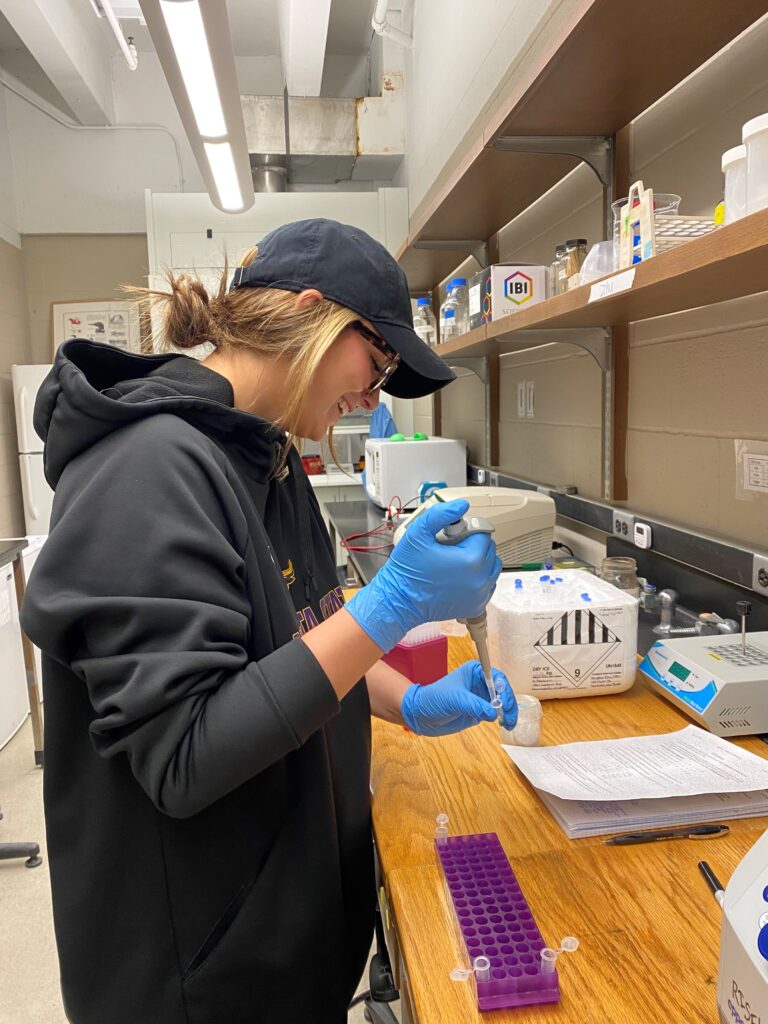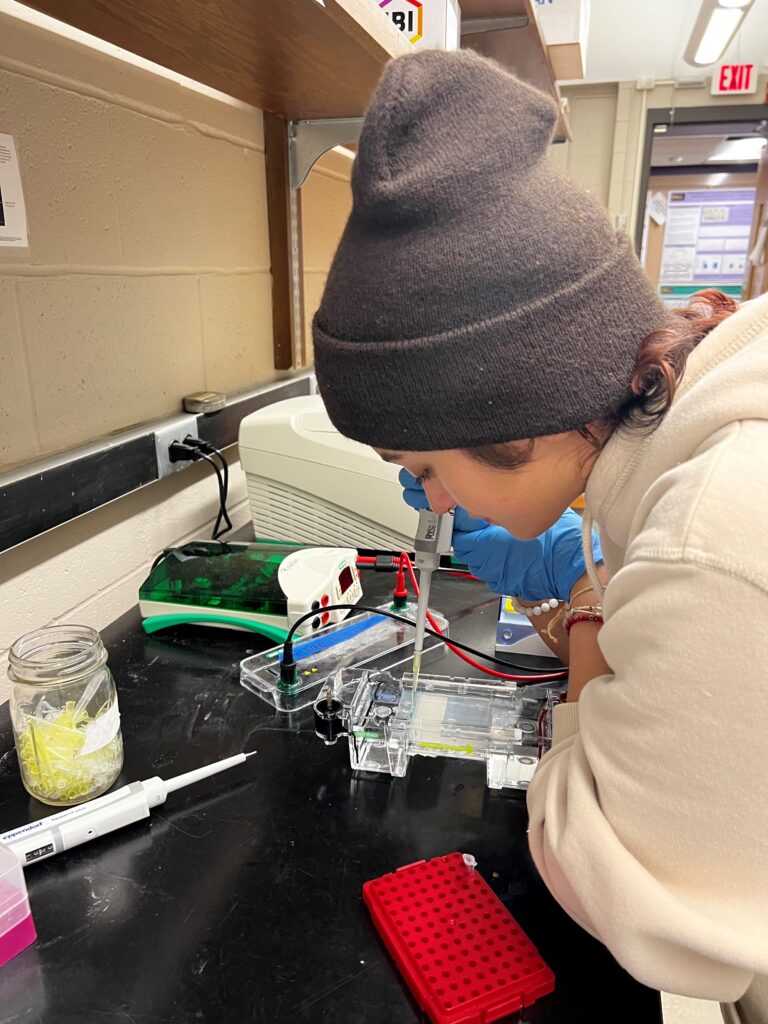17 February 2023
By: Saraí Barajas-Moreno and Georgia Deml
These past two weeks we picked primers that specify to our gene to make PCR and run gel electrophoresis. We have run multiple PCR reactions and gels with our new primers, each result being better than the last.
At the beginning of last week, we picked our gene, PLD4, and continued to research forward and reverse primers for our gene. We used the website National Center for Biotechnology Information to discover sets of primers that may work with our gene. The next website we used was Integrated DNA Technologies which helped us conclude three primers that could work. After ordering our primers, we received them that Friday and proceeded to rehydrate them using distilled water and create samples from them.
To start off, we multiplied our values by two and did that for four separate tubes. We then added our primers to three of the tubes and beta-actin in the final tube. With these master mixes, it created eight samples. We added cDNA to four samples, which are positive samples. To the other four, we added H2O, which are our negative samples. We then placed our eight samples into the thermal cycler to run for a two-hour time period.
We created our gel mold using 1X-TAE buffer and agarose gel and microwaved the mixture until the liquid was clear and warm to the touch. We then used a fifteen-well mold instead of the usual eight-well mold. After the gel hardened, we pipetted the 100-bp ladder and then our eight samples. We placed our gel into the gel box and we aligned the electrodes with the right color to start the process. We adjusted the gel box to run at 100 volts for thirty minutes.
Once the thirty minutes were over, we removed the gel from the gel box. We took our gel to the gel imager to get a better look at the results. We took a final image of our gel, printed it out, and placed it in our lab notebooks to further explain the results of our PCR.



